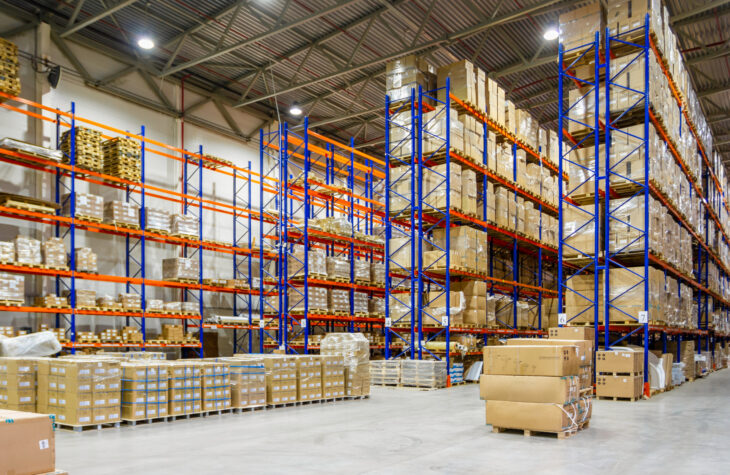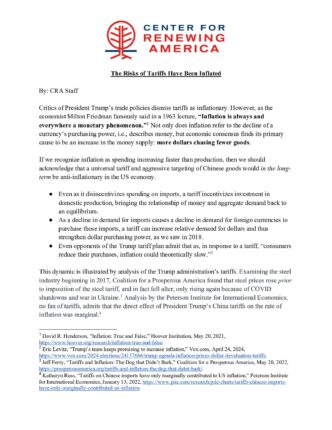
One Pager: The Risks of Tariffs Have Been Inflated
Critics of President Trump’s trade policies dismiss tariffs as inflationary. However, as the economist Milton Friedman famously said in a 1963 lecture, “Inflation is always and everywhere a monetary phenomenon.”1 Not only does inflation refer to the decline of a currency’s purchasing power, i.e., describes money, but economic consensus finds its primary cause to be an increase in the money supply: more dollars chasing fewer goods.
If we recognize inflation as spending increasing faster than production, then we should acknowledge that a universal tariff and aggressive targeting of Chinese goods would in the long-term be anti-inflationary in the US economy.
- Even as it disincentivizes spending on imports, a tariff incentivizes investment in domestic production, bringing the relationship of money and aggregate demand back to an equilibrium.
- As a decline in demand for imports causes a decline in demand for foreign currencies to purchase those imports, a tariff can increase relative demand for dollars and thus strengthen dollar purchasing power, as we saw in 2018.
- Even opponents of the Trump tariff plan admit that as, in response to a tariff, “consumers reduce their purchases, inflation could theoretically slow.”2
This dynamic is illustrated by analysis of the Trump administration’s tariffs. Examining the steel industry beginning in 2017, Coalition for a Prosperous America found that steel prices rose prior to imposition of the steel tariff, and in fact fell after, only rising again because of COVID shutdowns and war in Ukraine.3 Analysis by the Peterson Institute for International Economics, no fan of tariffs, admits that the direct effect of President Trump’s China tariffs on the rate of inflation was marginal.4
Tariff effects are relative and dynamic. Universal tariffs especially create a price of entry to the US market that will affect different imports and importers differently. There is not an exact 10 percent, or whatever the tariff rate is, increase in prices for consumers covering exporters or importers’ new cost such that all else in the market holds equal. Domestic and international players alike respond to changes in trade policy: foreign governments subsidize exports, importers eat the loss in profits to maintain market share, and American firms invest in further local production.
While the one-time effects of a universal tariff would vary from product to product, its long-term effects are clear: the protection and promotion of making things in America.
End Notes
- 1. David R. Henderson, “Inflation: True and False,” Hoover Institution, May 20, 2021, https://www.hoover.org/research/inflation-true-and-false. ↩︎
- 2. Eric Levitz, “Trump’s team keeps promising to increase inflation,” Vox.com, April 24, 2024, https://www.vox.com/2024-elections/24137666/trump-agenda-inflation-prices-dollar-devaluation-tariffs. ↩︎
- 3. Jeff Ferry, “Tariffs and Inflation: The Dog that Didn’t Bark,” Coalition for a Prosperous America, May 20, 2022, https://prosperousamerica.org/tariffs-and-inflation-the-dog-that-didnt-bark/. ↩︎
- 4. Katheryn Russ, “Tariffs on Chinese imports have only marginally contributed to US inflation,” Peterson Institute for International Economics, January 13, 2022, https://www.piie.com/research/piie-charts/tariffs-chinese-imports-have-only-marginally-contributed-us-inflation. ↩︎




